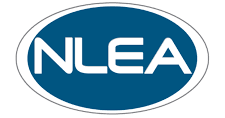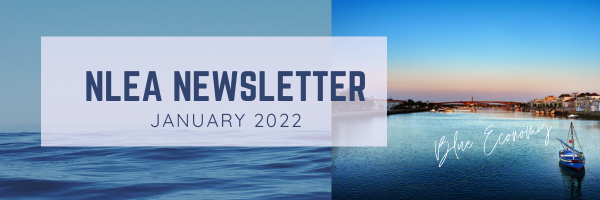
By: Sam Bailey, Strategic Initiatives Manager
What is a Blue Economy?
The lakes and rivers of Antrim, Charlevoix, Cheboygan, and Emmet Counties shape our lives everyday. They support many of the pastimes that define the “up north” lifestyle, boating, fishing, kayaking, and more. Local bodies of water play an integral role in our daily lives and an integral role in our economy.2015 research by the Anderson Economic Group and the Michigan Economic Center, Michigan’s “Blue Economy” provides roughly 1 in 5, or nearly one million Michigan jobs, and $60 billion in annual economic impact for the citizens of our state. The term “blue economy” has a variety of definitions but it generally refers to all the economic activity related to our water: think legacy industries like transportation, ports, ferries, and commercial shipping; water intensive industries like agriculture, manufacturing, ski resorts, energy, and beverage manufacturing; and growing sustainability industries like water technology products and services, water research and innovation centers, and water placemaking.
More than the Great Lakes
If Michigan is the Great Lakes state, Northern Lower Michigan embodies that name and then some. Of the 3,759 square miles governed by Antrim, Charlevoix, Cheboygan, and Emmet Counties, 44.8% of that area, or 1,684 square miles, is water. As if bridging Lake Michigan and Lake Huron isn’t enough, our area also contains four of Michigan’s largest inland lakes: Torch, Charlevoix, Burt, and Mullet Lakes. These bodies of water–in addition to our other lakes, rivers, and even aquifers–support our current economy and offer a path forward for our region. By supporting a transition towards a sustainable blue economy and fostering growth in emerging industries, Northern Lower Michigan can ensure a viable economic future for itself.
Based on data from the Michigan Economic Development Corporation and the Michigan Bureau of Labor Market Information (BLMI), the NLEA estimates that 1,157 to 2,422 people and 220 establishments are directly supported by the quantity and quality of our freshwater resources (the ranges of these estimates are driven by the fact that public employment from the BLMI is only offered in increasingly large ranges, 1-4, 5-9, 10-19… 100-249, etc). The bulk of the jobs reported are centered around the pleasure boat industry, supported by marinas, boat dealers, and service providers. However, there are many other industries who employ people on our bodies of water such as the fishing sector (40 to 88 individuals), dock manufacturing and marine construction (238 to 299 individuals), ferries (298 and 361 individuals), and watercraft construction (14 to 24 individuals). All of these conservative estimates result in that projection of 1,157 to 2,422 people in Antrim, Charlevoix, Cheboygan, and Emmet Counties directly employed by our waterways.
And There’s “Water-Based”
The number of jobs reliant on our water resources continues to grow as we examine industries that are not “water-based” but nevertheless rely on the quantity and quality of our water. Agriculture, Beverage Manufacturing, and Skiing are three prominent, water-intensive industries in Northern Lower Michigan. In 2019, the Beverage and Tobacco Manufacturing sector (it is classified as one industry but in our area it is primarily beverage manufacturing) supported more than 192 employees and 15 establishments in Antrim, Charlevoix, Cheboygan, and Emmet Counties. Across the four counties, 28 establishments and more than 262 employees were involved in the Crop Production sector in 2020. Area ski resorts that spur winter tourism use immense amounts of water to cover their slopes in snow. These drivers of our economy employ small armies–Nub’s Nob employs over 100 people, Boyne Mountain employs around 750 people, Shanty Creek Resorts employs around 400 people–not to mention the jobs that they support in nearby hotels, sports shops, and restaurants. In 2020, there were 378 establishments
employing more than 5,744 individuals in the Accommodation and Food Services industry which relies on tourists coming to enjoy the waterways in the summer and ski in the winter. As we expand our definition of the “blue economy” to include industries that are water-intensive or rely on tourists, the importance of the continued quantity and quality of our water resources grows further.
What Lies Ahead
The Michigan Economic Center’s 2015 report “Michigan Blue Economy: Making Michigan the World’s Freshwater & Freshwater Innovation Capital, highlights three emerging blue economy sectors: water technology products and services: Water Technology and Product Services; Water Education, Research, and Innovation Centers; and Water Placemaking. While all three fields are viable for our area, our greatest potential is in water placemaking, which they define as, “…including the economic impact of water and waterfront restoration, access, and use; real estate and private development; new recreation
and hospitality businesses; and the economic return from the message our communities send by being leaders in sustainability, sustainable water use, and a lifestyle with water enjoyment at its center – which can make Michigan a choice location to live, work and play.” With rapidly declining working age population and a labor force that has been shrinking for fifteen years, our region needs to leverage our existing assets to attract a new workforce to the area. The main reason that so many of us live here and so many others visit here is our access to water. By revitalizing waterfronts, promoting public access to water, and ensuring our resources are sustainably managed, Northern Lower Michigan can attract a new generation of workers to the area. Grand Rapids and Marquette–two prominent, growing communities in Michigan–have intentionally invested in placemaking projects on the waterfront and they are reaping the rewards in new jobs and a growing labor force. Reversing the negative trends in our region’s labor economy can ensure our existing businesses remain open and help entice new, high-paying jobs to the
area.
Moving forward, the NLEA will strive to leverage our region’s water resources, the strength of the local blue economy, and state resources to uplift workers and communities in Antrim, Charlevoix, Cheboygan, and Emmet Counties. However, our efforts alone will not be enough. In order to turn around troubling economic trends, we need buy-in from local governments, businesses, and other organizations. By embracing a sustainable blue economy together, we can chart a path to a vibrant future for Northern Lower Michigan.
|
|
|
|
|
|
|
|
|
|
|
|
|
|
|
|
|
|
|
|
|
|
|
|
|
|
|
|
|



















